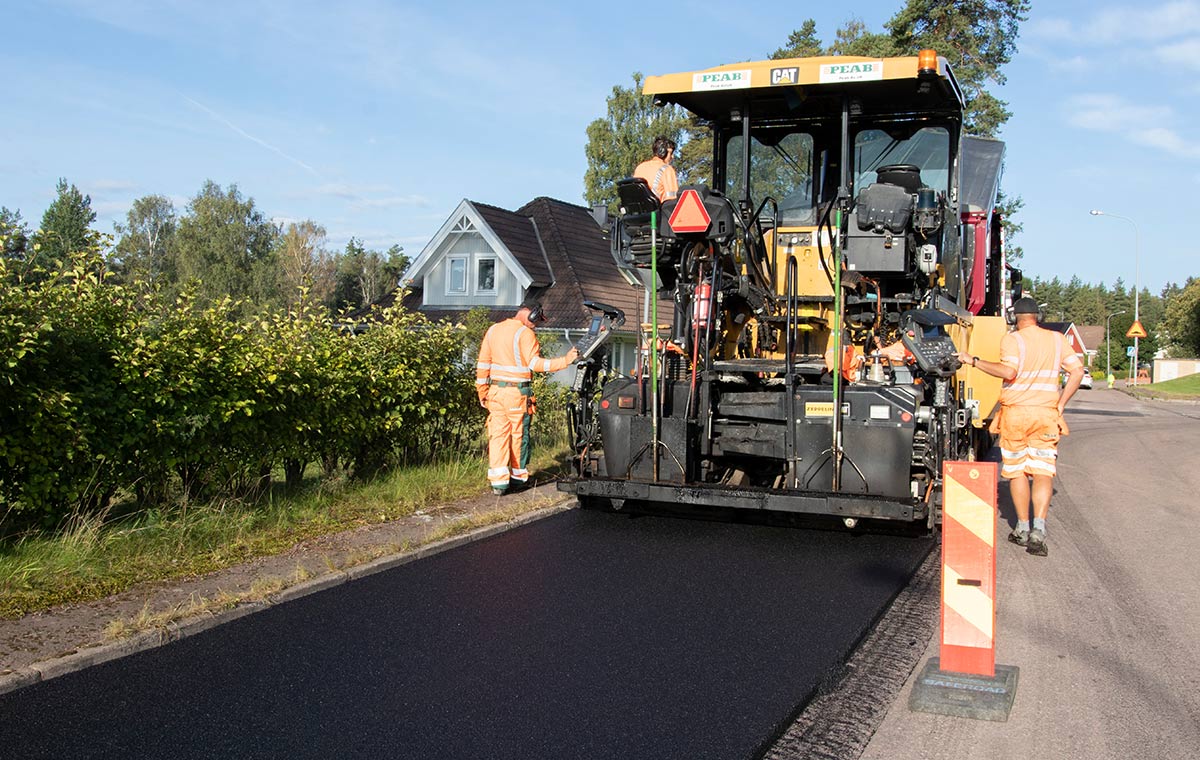“We see this as a very exciting development, using raw materials from the forest to reduce our CO2 emissions and at the same time make ourselves less dependent on imports. If we can drive the development towards more binders for our paved roads coming from Nordic forests, it is very positive. We see environmental benefits, job creation and more sustainable coatings ahead of us as we now develop the technology of adding lignin to our ECO-Asfalt, says Johan Bolander, Production Manager, Peab Asfalt.
Paving with lignin has shown good results. Cross-industry collaboration and working closely with customers to develop a climate-improved and more durable asphalt is a prerequisite for driving future development.
In collaboration with municipalities, Peab Asfalt has been paving test sections with lignin. The most recent test is being conducted on Bråtvägen road in Forshaga municipality where the amount of lignin used in the binder is 10%. In addition to lignin, Peab has included 30% re-used asphalt from milled road surfaces. Earlier on Peab Asfalt has run tests, for example, on Viksjöleden road in Järfälla municipality close to Stockholm.

Lignin is the substance that holds the fibers together in a tree. In addition to the environmental benefits of lignin, Peab Asfalt also expects a positive climate effect from biomass being bound into the asphalt.
- We have been working with different types of lignin for a few years now and it is important that we trial it in real production. Last year we performed our first test surfaces with lignin and now we are moving forward with developing the concept. It feels very exciting and important to have this cross-industry collaboration and to work closely with our customers to develop a climate-improved and more durable asphalt pavement. We are pleased that we can put these test stretches in place and contribute to municipalities meeting their environmental goals, says Lars Jansson, laboratory manager, Peab Asfalt.
The test sections have been paved with ECO-Asfalt where the binder is partially replaced by lignin reducing the amount of fossil-based bitumen. The lignin is supplied by Stora Enso. The asphalt plant uses renewable fuel (bio-oil) for drying and heating the stone material (ballast).
Lignin is a complex plant-derived polymer found in the cell walls of almost all dry-land plants. It binds cellulose and hemicellulose together, giving wood its stiffness, strength and resistance to rotting.
Stora Enso’s lignin has also been tested in other asphalt projects with good results. As a company, we actively work with our Lineo® by Stora Enso lignin offering to discover further advantages in asphalt-making and replacing fossil-based materials with a bio-based solution, thus reducing the carbon footprint.





